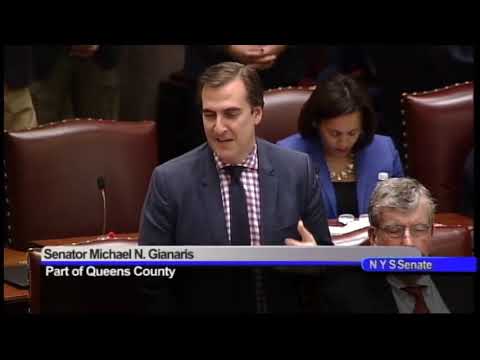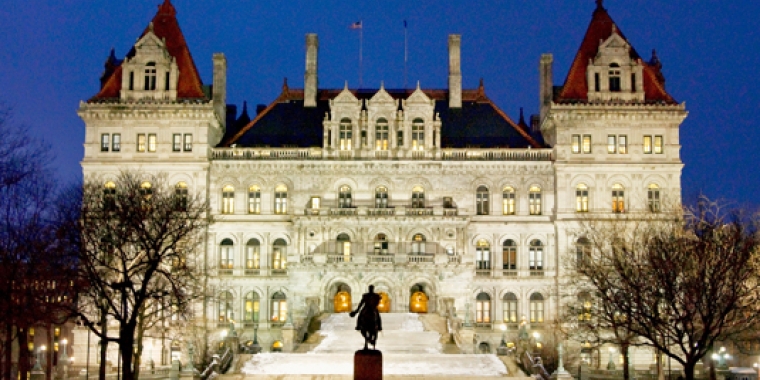
The Hill: States plot next moves on redistricting

Legislatures across the country are preparing for battles over political boundaries that could lock in partisan control for the next decade, driven by Supreme Court rulings that limited federal involvement in the state redistricting process.
Legislators and redistricting experts say the twin rulings — Shelby County v. Holder in 2013 and Rucho v. Common Cause in 2019 — as well as improved technology and huge amounts of money flowing into new organizations dedicated to the decennial battle over redrawn political maps will open the door to a new era of gerrymandering.
“We’re in uncharted waters,” said Mike Gianaris (D), deputy majority leader of the New York state Senate.
Much like the last redistricting cycle, Republicans will hold the rights to redraw more district lines than Democrats, by virtue of majorities they achieved and maintained in state legislative chambers in November’s elections.
The GOP will control the redistricting process in states that account for 175 House seats over the next year, while Democrats will control states sending 47 House lawmakers to Washington.
The two parties share control in states that account for 45 seats. Another 161 seats will be drawn by independent or bipartisan commissions, and seven states send only one at-large member to Congress.
After the last round of redistricting in 2011 and 2012, Democrats sued several states over new boundaries, alleging unfair efforts to dilute the power of racial and partisan minorities. Florida, North Carolina, Pennsylvania and Virginia were forced to redraw district lines.
In the 2013 Shelby decision, the high court struck down Section 5 of the 1965 Voting Rights Act, which required certain states and local jurisdictions with a history of racial discrimination to seek approval from the Justice Department before they make changes to voting rules or procedures, including the redistricting process.
Six years later, the court ruled on Rucho, a case stemming from North Carolina in a decision that effectively allowed states to draw new maps with partisan intent. Writing for the five-justice majority, Chief Justice John Roberts said allegations of partisan gerrymandering were political questions and therefore outside the scope of the federal courts.
“The decision in Rucho v. Common Cause means that some states are going to take the gloves off, to the extent the gloves were ever on,” said Justin Levitt, a constitutional law professor at Loyola Law School in California and a former official in the Justice Department’s civil rights division.
“I think you’ll see some rampant partisan excess. I think you’ll see other states where the calculation is a little more refined,” he said.
Republicans say the Supreme Court decisions will end what some called micromanagement of what is an inherently political process.
“We’ve gone through a decade of unprecedented changes as far as redistricting is concerned,” said Phil Berger, the Republican president of the North Carolina state Senate. “Redistricting is a different thing in 2020 than it was in 2001 or in 2010, or even in 2011, quite frankly. What we have seen is an enhanced willingness of courts to micromanage the redistricting process, and a lot of that’s been driven by partisan lawsuits.”
North Carolina is likely to add another seat when the reapportionment process takes place, according to estimates of population trends by the demographer Kimball Brace. The GOP-controlled legislature, which does not have to earn Gov. Roy Cooper’s (D) support to pass its maps, is likely to try to draw a new seat friendly to conservatives.
Gianaris will serve as the point person for New York Senate Democrats, who control a supermajority of seats in the legislature — and with it, the ability to redraw district lines.
New York is likely to lose at least one of its 27 seats in the House of Representatives when reapportionment takes place, and Democrats are likely to target one of the state’s six or seven Republicans, depending on final election results, for defeat.
“There’s likely to be a change in the partisan composition of our delegation if the lines are drawn more fairly,” Gianaris said. “It’s like a game of Jenga, once you pull out one piece it affects all the rest.”
Democrats have made inroads in some states, like Wisconsin, where Gov. Tony Evers (D) will have the ability to veto any purely partisan maps. State House Speaker Robin Vos (R) told The Hill the process will be different than it was a decade ago, when the GOP legislature worked with then-Gov. Scott Walker (R) to draw a map that guaranteed Republicans would hold a majority of U.S. House seats.
“We might not draw a map that [Democrats] want, but certainly we want a map that hopefully [Evers] could sign,” Vos said. “It doesn’t have to be raw politics 24/7, 365.”
Every 10 years, population shifts mean some congressional delegations grow and others shrink. In the growing states, legislators can use a new district to shore up vulnerable incumbents or to target those of the rival party. In shrinking states, the redistricting process becomes a statewide game of musical chairs.
This time around, the music will stop in up to 10 states, according to Brace’s estimates — Alabama, California, Illinois, Michigan, Minnesota, New York, Ohio, Pennsylvania, Rhode Island and West Virginia are all projected to lose seats.
That could pit some members against each other; Reps. David Cicilline (D-R.I.) and Jim Langevin (D-R.I.) will have to compete for a new at-large seat. In West Virginia, the three-seat delegation will be reduced to two, kicking off a fight between Republicans. In Alabama, two Republican representatives-elect are likely to be drawn into the same district when their state’s delegation shrinks to six seats.
If there is any constant in the tumult of the redistricting process, it is the litigation that will inevitably follow. Even without federal court involvement, state courts have increasingly weighed in on processes they deem unfair, in states such as North Carolina and Pennsylvania. In states where one party controls the redistricting process, legislators have to weigh the risk of a legal challenge they might lose against the benefit of a congressional seat they might win.
“There’s going to be a calculation that state legislatures have to make even where there’s unilateral partisan control about how much they want to tempt their state courts,” Levitt said. “I would expect a lot more action on the state court level for legislatures that get truly greedy.”
Vos acknowledged the implicit threat that a Wisconsin Supreme Court might not align with Republicans if Evers or Democrats eventually sue.
“You have a conservative-leaning state court,” Vos said. “But not every one of them always votes the same way.”



